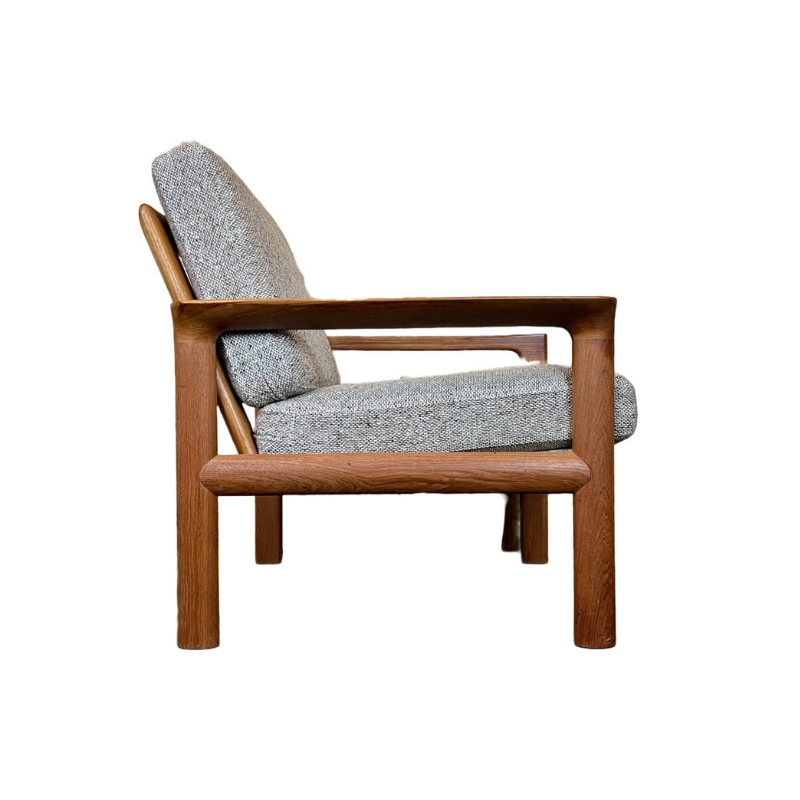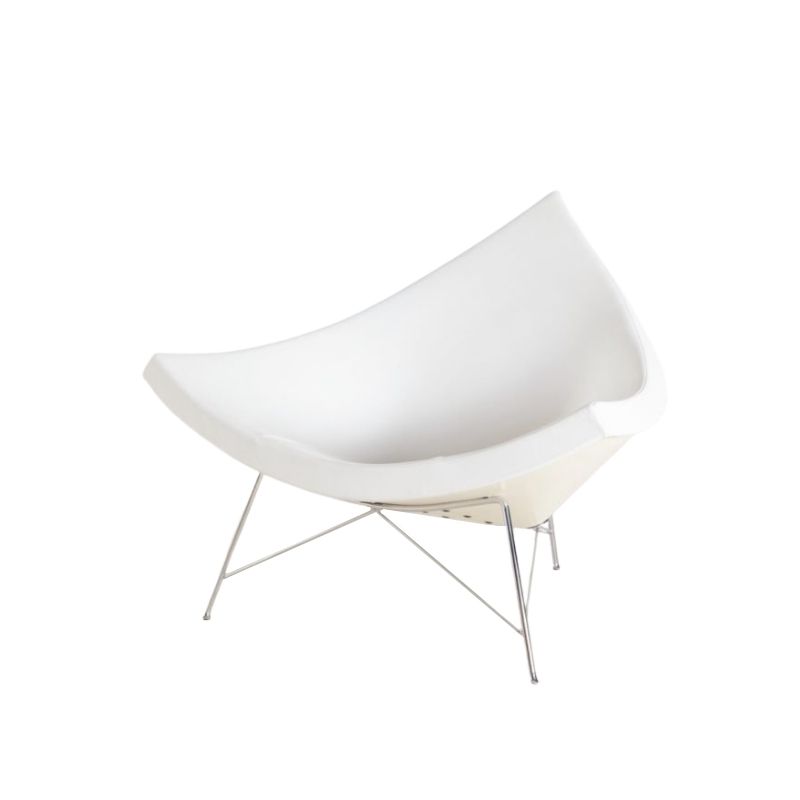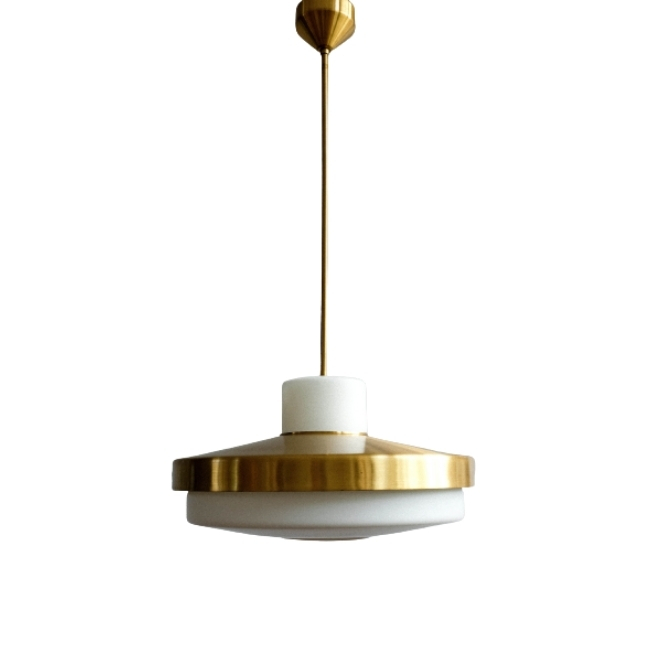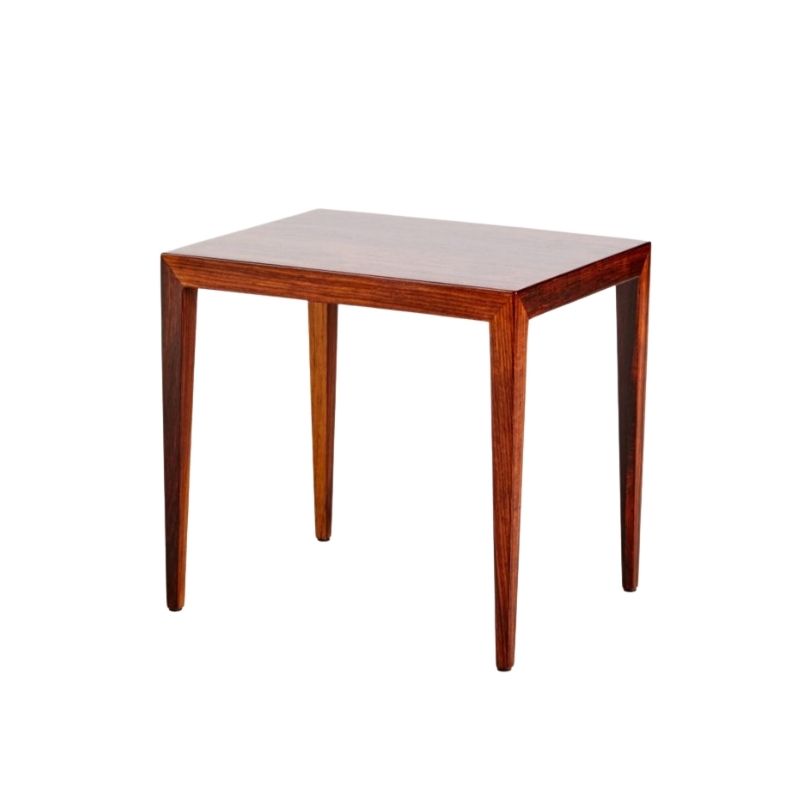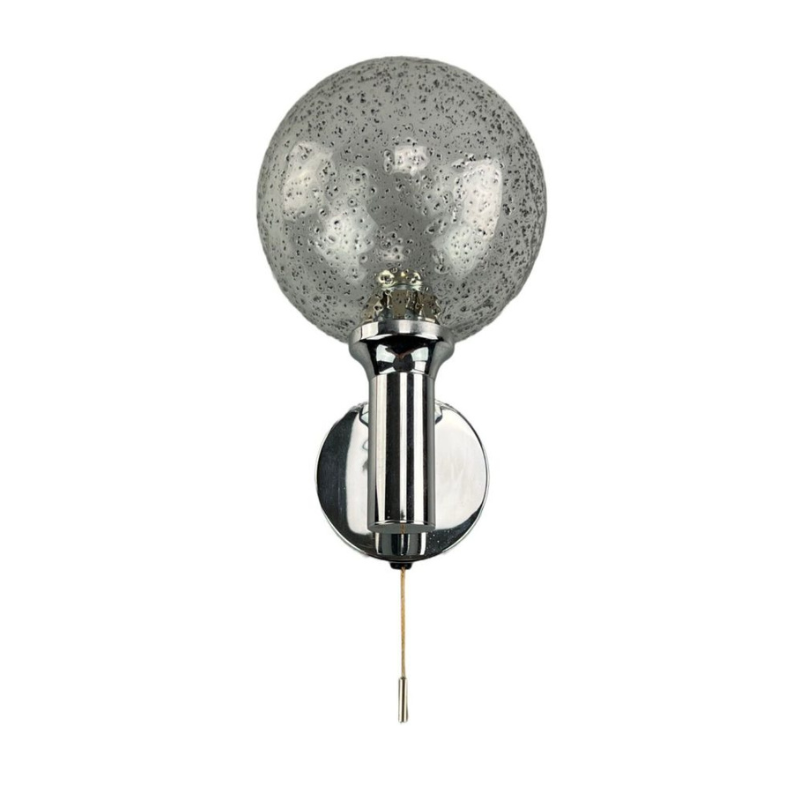How's this
This is a photo of a chair I have, from the recent post..."Who designed this chair?"
This type of armrest is evident in many Scandinavian styled chairs produced across the globe.
I'm interested in the origins/inspiration of how this came to be one of the most recognizable features of Scan. Design. Might be difficult to pinpoint the exact conception...but a general understanding of this would be really nice to know.
It seems
clear to me: the "sticks" of the chair frame are adequate as structure, and become the dominant aesthetic motif as a result. But at the arm, comfort dictates a broader surface, just in that one place. So, the designer adds just enough material to that one piece of wood, to adjust that part of the frame to the human form.
It is certainly not the most economical use of wood, as a good deal of material is thrown away in order to leave this piece, even assuming some "nesting" of parts in the initial cutting. Therefore, this detail is sumultaneously an aesthetic "luxury" and a highly functionalist solution of an ergonomic problem. (If the arm rail is actually made of two pieces joined, in this case, then some of what I say is moot.)
The back/arm/top rail of Hans Wegner's most famous chair is a prime example of this luxurious "functional sculpture": costly woodworking in the service of strength, beauty and comfort all at once.
Grasping
Certainly see what you're getting at SDR. I have taken my arm and did some comparisons between arm & armrest and the proportions are nearly perfect. Function meets form, and very beautifully done, however I still feel adrift as if there was something else catalyzing this besides a needed place for elbows. Many sculptures take on a form and presents it anew...that's what I'm trying to figure out..if this is even the case...and sure, that form could just be an elbow and nothing more. Would you (or shy lurkers) happen to know when this first surfaced?
fishes in the air
Great Azure...you got me humming even more... fins as a popular mid-century design motif... I'm going pause this Indiana Jones expedition... Before I do, Azure, are you pointing towards Gibbings as the progenitor of the winged (fins) armrest? If so, I'll have myself a look.
SDR...lol...very amusing coincidence! A highly observant individual you are! What exactly do you mean by "rivers".
Well Woofwoof...
Let's do the exercise. Let's just make a list of "flared" arm rests and see how far back we can go.
I would start with Fritz Henningsen's chair from 1930 as the first one but the flare is quite modest so my second choice would be the chair that was made for the Arhus city hall. It it still not clear who designed it. Erik Möller and Arne Jacobsen were the architects of both the building and the furniture, but it looks like an early Hans Wegner. Wegner happened to work in Arne Jacobsen's office at the time of the Arhus project...so 1937-1940 would be a good guess.
Finn Juhl deserves to be declared the champion in flared arm rests because after starting with one in 1945 he always used it...or almost always.
In trying
to answer the question of "where did it come from" I'd have to say the answer is implicit in the question (as it were): how many shapes could a practical and straightforward solution to the milk bottle, for instance, take ? Given a slender frame member, and the need for a broader arm or elbow rest on a part of that frame member, I'd say the choices are limited -- aren't they ?
Not to take anything away form the creativity of the designers that have been mentioned, but. . .
Or maybe i'm missing the point. Maybe you're referring only to that particular wedge-shaped arm flare ? Of course, as you say it seems to be particularly shaped to the need, so it hardly seems like an arbitrary shape. . .?
Woof:
"Rivers" are the accidental aligning, roughly vertically, of spaces between words in successive lines of copy, so that a while space runs for a number of lines through the text. These are not distractingly obvious, but once the eye is used to looking for them, they appear surprisingly often.
I haven't yet photographed any. If you know anyone who has, psychiatric help should be discussed with family members, discreetly. . .
If you need any help, please contact us at – info@designaddict.com



